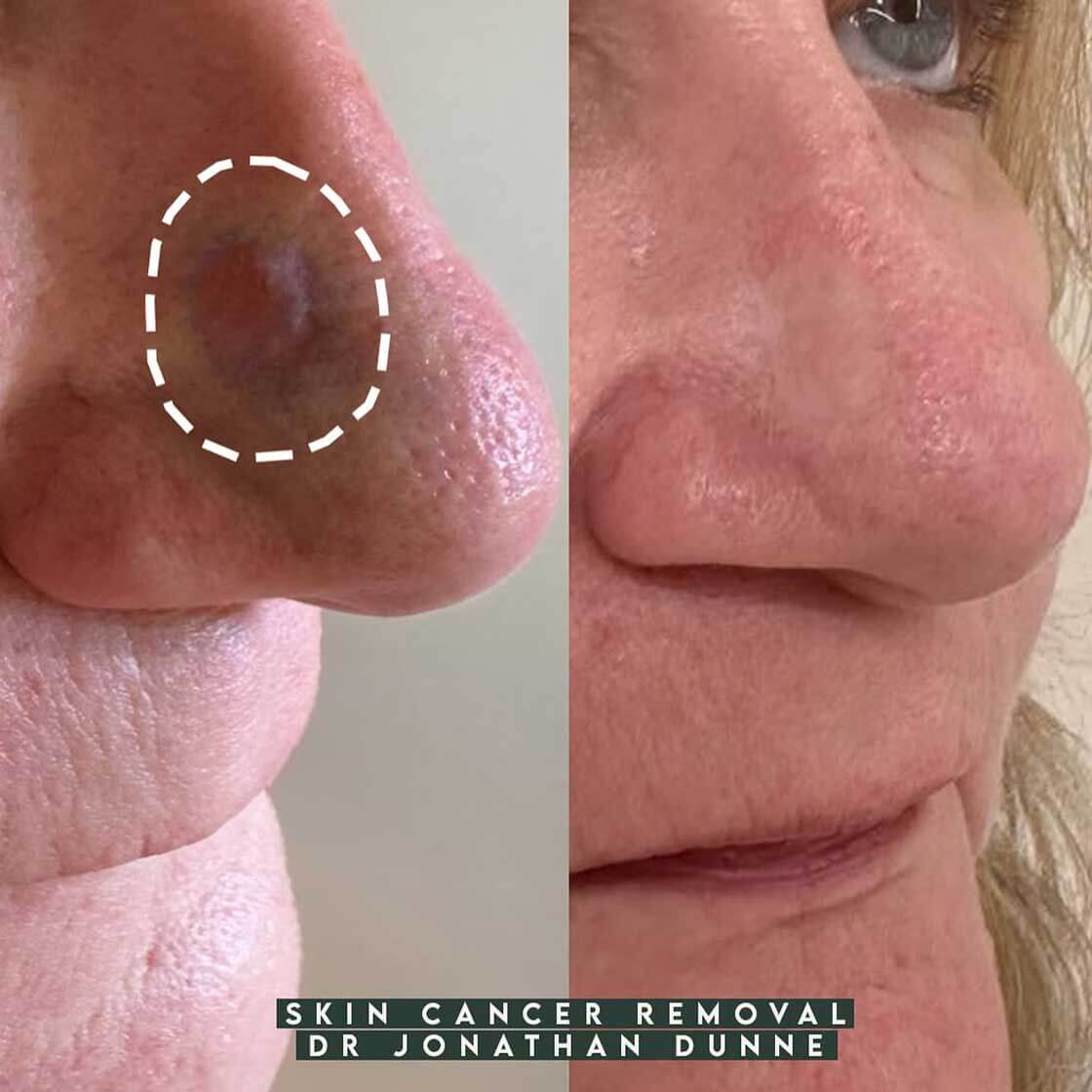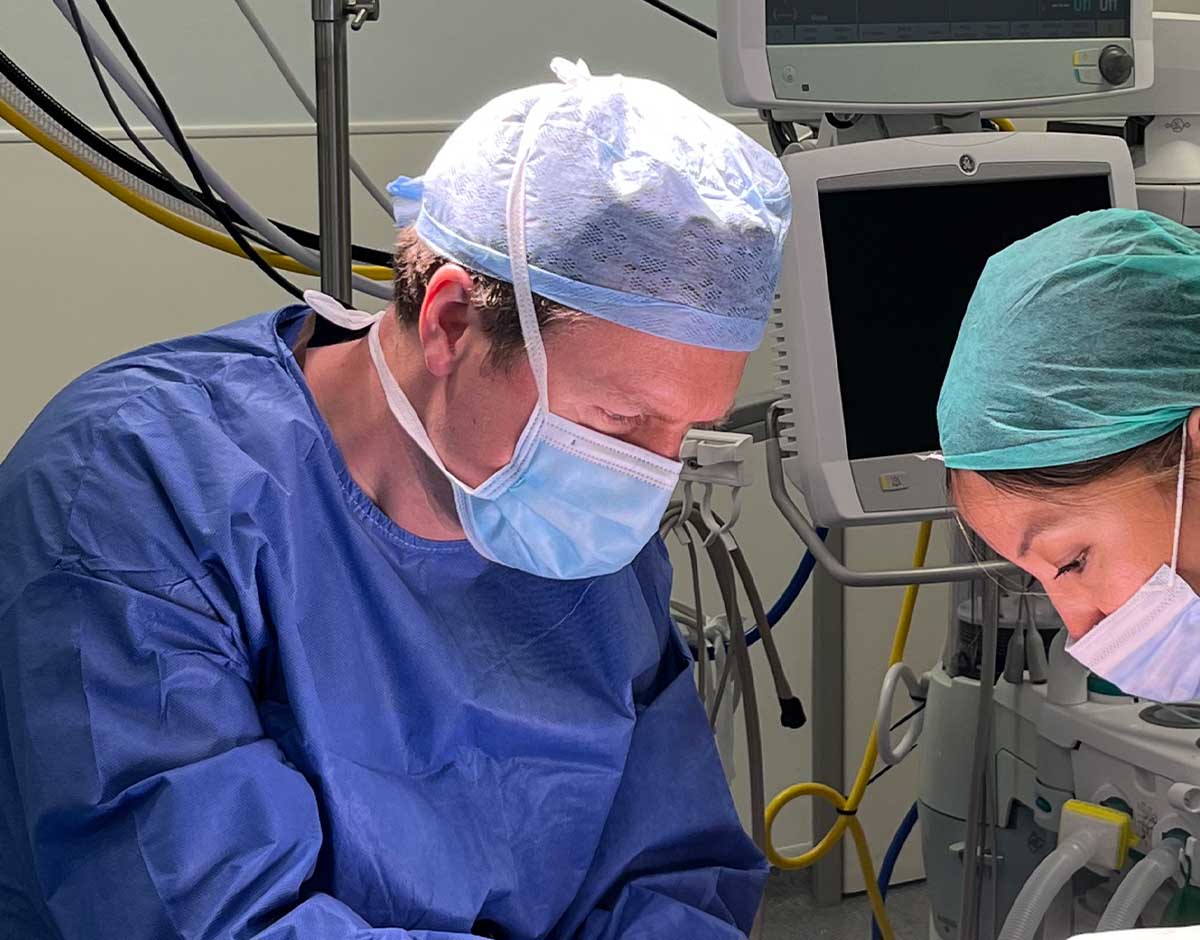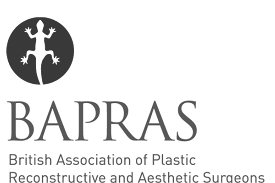-
What is squamous cell carcinoma?
Squamous cell carcinoma is a type of keratinocyte or non-melanoma skin cancer that is derived from the cells in the outermost layer of the skin (epidermis) that make keratin. It is one of the most common types of skin cancer, accounting for about 20% of all skin cancer cases. Common symptomatic signs include a firm, red nodule a wound that doesn’t heal, or a wart-like growth.
-
What sort of squamous cell carcinoma treatment will I need?
Patients with early-stage squamous cell carcinoma undergo a surgical to excise the skin cancer with a margin of normal skin and may require reconstruction with neighbouring tissue (local flap) or a skin graft. Patients with advanced or metastatic squamous cell carcinoma may require more aggressive treatment options. This can include radiation therapy or immunotherapy.
-
What happens at your first squamous cell carcinoma appointment?
During your first appointment, it’s important to discuss any concerns or questions you may have about the diagnosis, treatment options, and potential side effects. Jonathan can provide you with the information and support you need to help you make informed decisions about your care. Overall, the first appointment for squamous cell carcinoma involves a thorough assessment of your medical history and physical examination, followed by further tests or procedures to confirm the diagnosis. Once diagnosed, treatment options will be discussed and tailored to your specific situation.
-
How painful is squamous cell carcinoma treatment?
Local anaesthetic will be used to numb the area before the procedure, so although you may feel some discomfort or pressure during the surgery, you shouldn’t be in pain. Jonathan will give you information about pain management strategies and medications that can help alleviate any discomfort or pain associated with your treatment.
-
How long does squamous cell carcinoma treatment take?
Early-stage squamous cell carcinoma can often be successfully treated with a surgical procedure. The excision can usually be done on an outpatient basis and may require local anaesthetic. The recovery time after excision is typically short, and patients can usually resume their normal activities at one to two weeks. For more advanced or aggressive cases of squamous cell carcinoma, treatment may involve a combination of surgical procedures and radiotherapy.
-
What results can I expect from squamous cell carcinoma treatment?
The main goal of treating squamous cell carcinoma is to remove the cancer while minimising damage to healthy tissue to enable a cure. The success rate of surgical excision is generally high, with a low risk of recurrence. Radiotherapy may be recommended for patients who have aggressive squamous cell carcinoma to reduce the risk of recurrence, or if they are not suitable candidates for surgery.
-
Are there any risks involved with squamous cell carcinoma treatment?
One of the main risks is the potential for side effects from the treatment itself. Depending on the type and stage of the cancer, treatment options may include surgery, radiotherapy or immunotherapy. Each treatment option carries its own set of risks and potential side effects. Jonathan will talk about all the side-effects and risks associated with the treatment you’re having, when you have your consultation with him.

Squamous Cell Carcinoma (SCC)
Skin Cancer
Squamous cell carcinoma (SCC) is a common type of keratinocyte or non-melanoma skin cancer that is derived from the cells in the outermost layer of the skin (epidermis) that make keratin – the protein making skin, hair and nails. The most common treatment is surgical removal of the cancer.
How does squamous cell carcinoma treatment work and what does it involve?
Surgical removal of the tumour involves excision, where the tumour and a small margin of healthy skin are removed. In some cases of larger tumours in complex sites such as the face, more extensive surgery may be required and the wound may need to be reconstructed with local tissue (a skin flap) or a skin graft. Radiotherapy may be administered following surgery for advanced SCC and those at high risk of recurrence and spread. Where SCC has spread to lymph nodes, surgical removal (lymphadenectomy) of all lymph nodes may be indicated. For inoperable disease, immunotherapy may be indicated to stimulate the body’s immune system to recognise and attack cancer cells. Your personal treatment plan will be drawn up once the nature of your cancer has been diagnosed.
Why choose Jonathan for your squamous cell carcinoma treatment?
Jonathan is the clinical lead for skin cancer at Imperial College Healthcare NHS Trust. He has a wealth of knowledge in treating squamous cell carcinoma. In addition, Jonathan has experience in major facial reconstruction and this type of cancer often affects the face.
Faqs | Squamous Cell Carcinoma (SCC)
“I would certainly recommend Jonathan – he was so gentle and kind aswell as an amazing doctor. I was seen two days after contacting the when I had my biopsy. Five days after that, I had my procedure. Then several weeks of follow up checkups. The clinic was lovely, great location.”
Client Review











